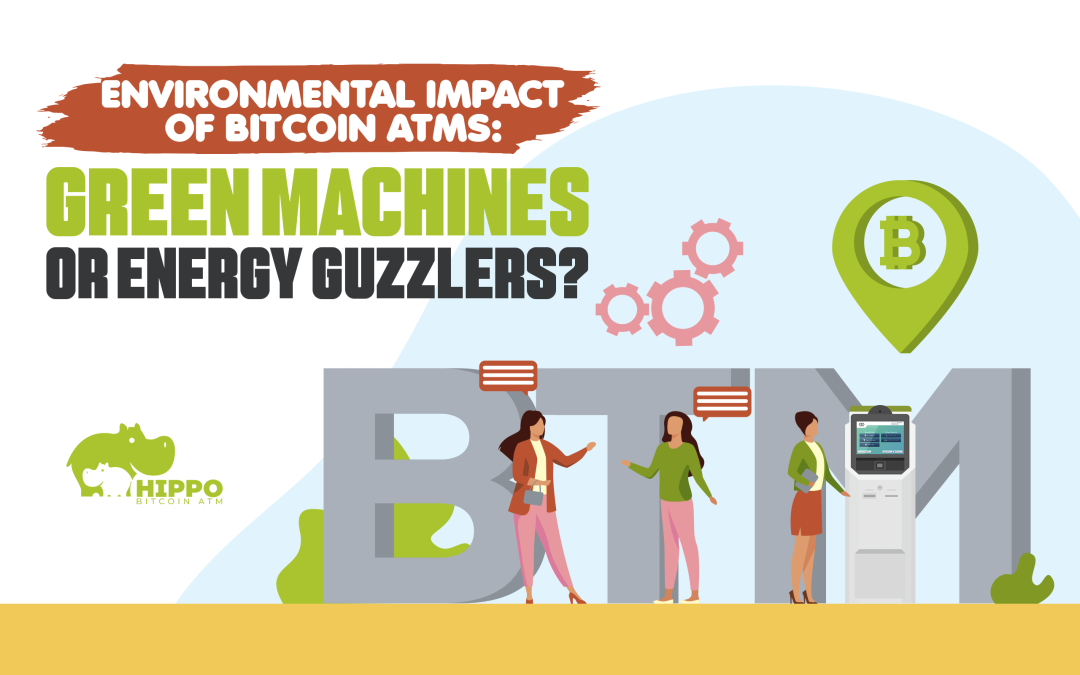Introduction: The Duality of Bitcoin ATMs
In the vast expanse of the cryptocurrency realm, where digital currencies are as unpredictable as the weather, Bitcoin ATMs have emerged as the tangible anchors of this intangible world.
With a global count surpassing 16,000 Bitcoin ATMs by mid-2021, we are compelled to ask: Are these machines symbols of futuristic financial inclusivity, or are they clandestine culprits adding to our environmental woes?
What is a Bitcoin ATM? Delving into the Crypto World
Bitcoin ATMs, colloquially known as BTMs, distinguish themselves from traditional ATMs. While they facilitate the buying or selling of Bitcoin and assorted cryptocurrencies, they differ fundamentally in their operations.
From their introduction to the world in 2013, we witnessed the first Bitcoin ATM in Vancouver, Canada, in 2013. Fast forward to 2021, and there has been a staggering 10,000% growth in Bitcoin ATMs since their inception and even more over the last 2 years.
Also, it’s crucial to make a difference between Bitcoin ATMs and Bitcoin miners. The Bitcoin ATMs are kiosk devices that buy or sell cryptocurrency, while Bitcoin miners actually mine the Bitcoin.
The Energy Quotient: Decoding Consumption
When the topic of Bitcoin is raised, power consumption often takes center stage. While it’s true that Bitcoin miners do utilize a substantial amount of electricity, the industry is actively seeking solutions and exploring the possibility of transitioning to renewable energy sources.
It’s crucial to recognize that Bitcoin ATMs operate differently as they don’t engage in Bitcoin mining, consequently resulting in significantly lower energy usage.
A Bitcoin ATM essentially functions as a large computer equipped with a camera, scanner, and printer. Its power consumption is akin to that of a conventional computer with similar peripherals.
Moreover, the Bitcoin ATM includes a cash receiver or dispenser, which also contributes to its energy consumption. However, when considering the bigger picture, the power consumption of a Bitcoin ATM is negligible in comparison to the energy consumption of Bitcoin mining equipment.
In essence, the energy consumption of a Bitcoin ATM doesn’t deviate significantly from that of a traditional ATM or a simple candy vending machine.
Bitcoin’s Broader Environment Dance
While Bitcoin mining has notoriously been at the epicenter of discussions about energy usage. Some sources claim with just a single transaction guzzling enough energy to keep an average US household running for 24 days.
Bitcoin ATMs, consume significantly less and can not be compared to miner equipment but it consumes as we noted above closer to a traditional ATM.
The Green Shift: Can Bitcoin ATMs Morph into Eco-friendly Machines?
The industry has seen the advent of energy-efficient Bitcoin miner models, with some innovative minds exploring solar or even vulcano-powered miner equipment, especially for regions endowed with abundant sunlight or volcanic activity.
A noteworthy trend is the growing demand among consumers, particularly millennials, for sustainable mining. Recent studies suggest that more than 60% of this age group is inclined towards businesses that champion environmental sustainability, potentially driving a shift towards greener mining operations.
Regulatory Landscape: The Role of Governance
Different countries have different stances. For instance, nations like Norway, equipped with stringent green energy policies, could become frontrunners in fostering eco-friendly Bitcoin miners.
However, in the absence of a unified global policy, most mining operators remain tethered to the local energy standards and regulations.
Roadblocks and the Path Forward
While sustainable technologies are promising, they often come with a steeper initial price tag, acting as a deterrent. Additionally, a significant segment of Bitcoin enthusiasts remains indifferent to the environmental ramifications of Bitcoin miners.
To counter these challenges, a multi-pronged approach involving incentives for green technology adoption, widespread awareness campaigns, and collaborative efforts by industry leaders to establish sustainability standards might prove beneficial.
Conclusion: Navigating the Digital Tide Responsibly
The widespread adoption of Bitcoin ATMs reflects our progression towards a more digitally oriented society. Presently, Bitcoin ATMs exhibit a relatively modest energy consumption that doesn’t require debates or industry adjustments.
Nonetheless, as we traverse this ever-changing landscape, the necessity to align Bitcoin mining with environmental sustainability demands more profound debate. It is within this equilibrium that the future of Bitcoin mining, and quite conceivably a significant portion of our crypto evolution, genuinely rests.


